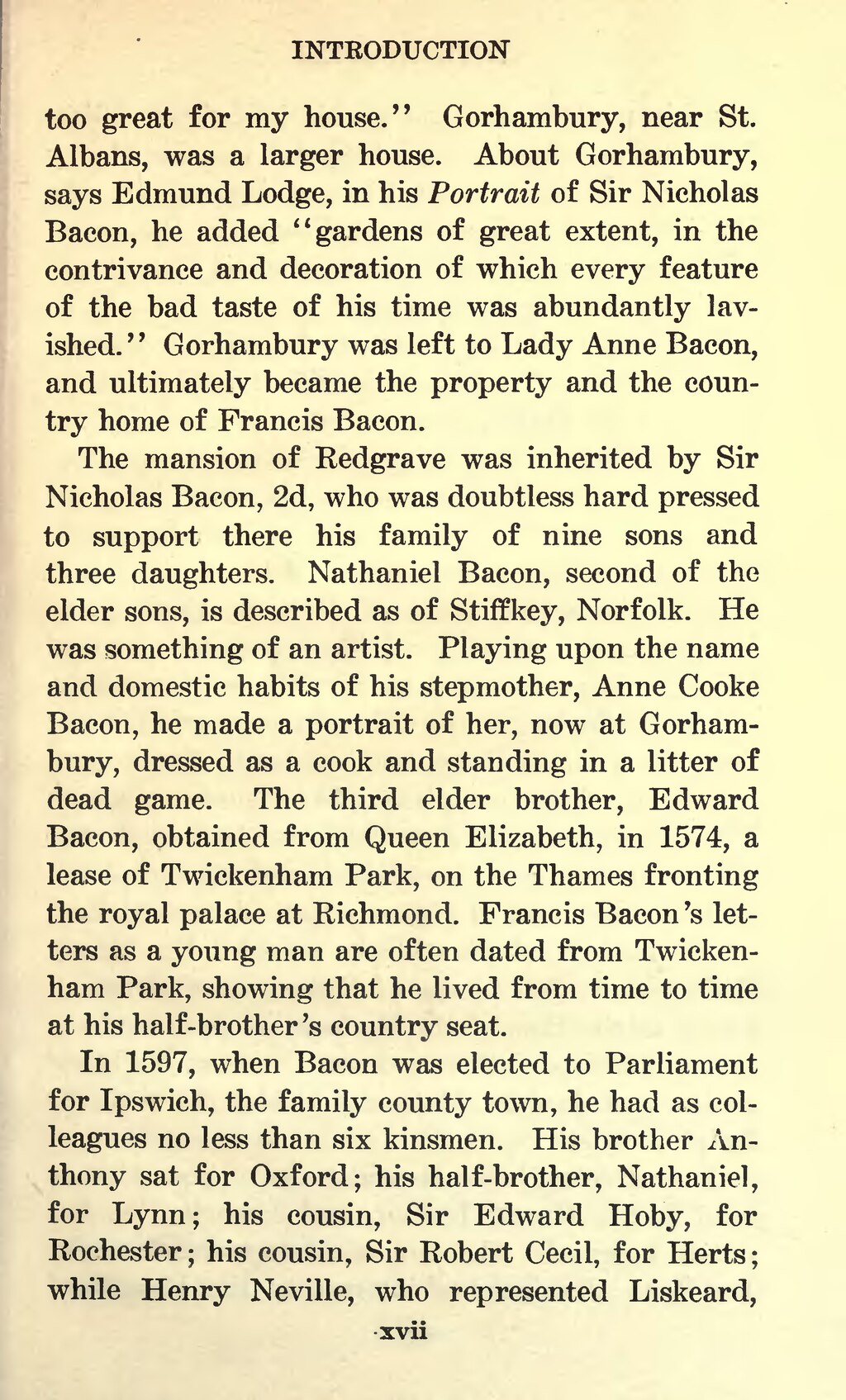too great for my house." Gorhambury, near St. Albans, was a larger house. About Gorhambury, says Edmund Lodge, in his Portrait of Sir Nicholas Bacon, he added "gardens of great extent, in the contrivance and decoration of which every feature of the bad taste of his time was abundantly lavished." Gorhambury was left to Lady Anne Bacon, and ultimately became the property and the country home of Francis Bacon.
The mansion of Redgrave was inherited by Sir Nicholas Bacon, 2d, who was doubtless hard pressed to support there his family of nine sons and three daughters. Nathaniel Bacon, second of the elder sons, is described as of Stiffkey, Norfolk. He was something of an artist. Playing upon the name and domestic habits of his stepmother, Anne Cooke Bacon, he made a portrait of her, now at Gorhambury, dressed as a cook and standing in a litter of dead game. The third elder brother, Edward Bacon, obtained from Queen Elizabeth, in 1574, a lease of Twickenham Park, on the Thames fronting the royal palace at Richmond. Francis Bacon's letters as a young man are often dated from Twickenham Park, showing that he lived from time to time at his half-brother's country seat.
In 1597, when Bacon was elected to Parliament for Ipswich, the family county town, he had as colleagues no less than six kinsmen. His brother Anthony sat for Oxford; his half-brother, Nathaniel, for Lynn; his cousin, Sir Edward Hoby, for Rochester; his cousin, Sir Robert Cecil, for Herts; while Henry Neville, who represented Liskeard,
